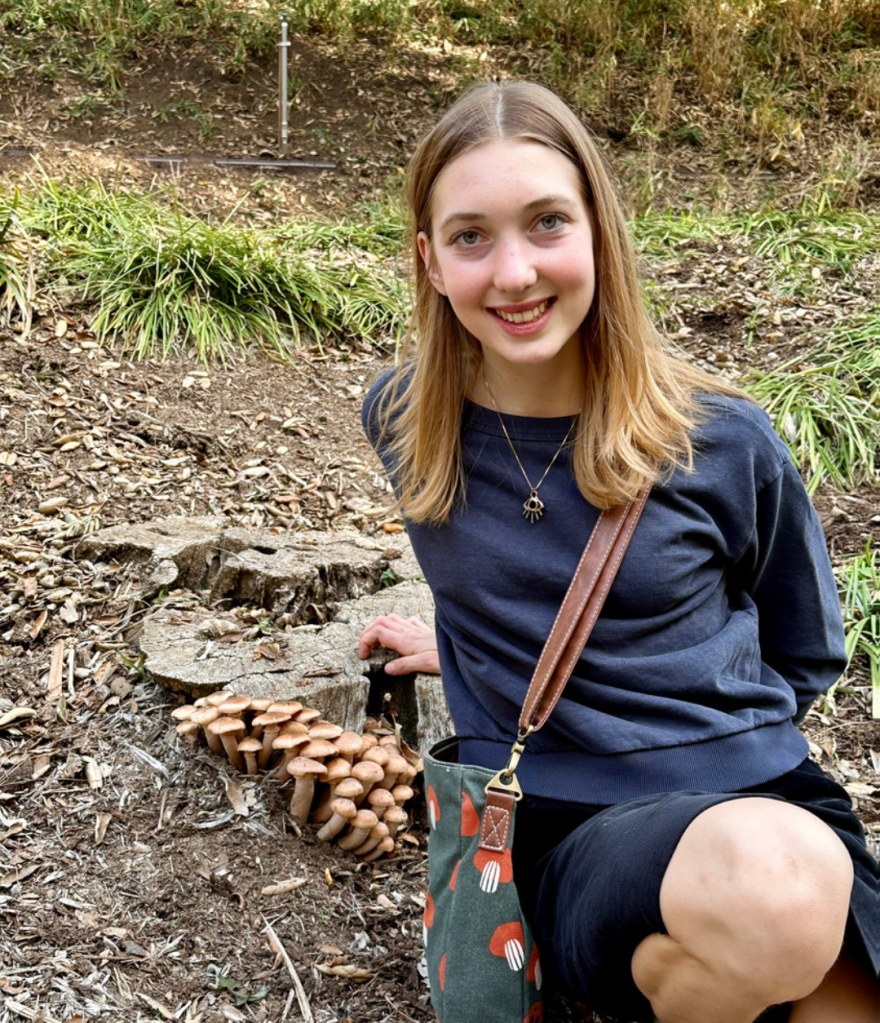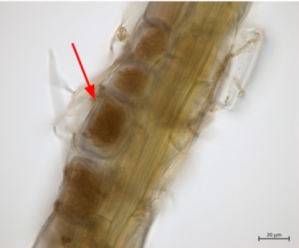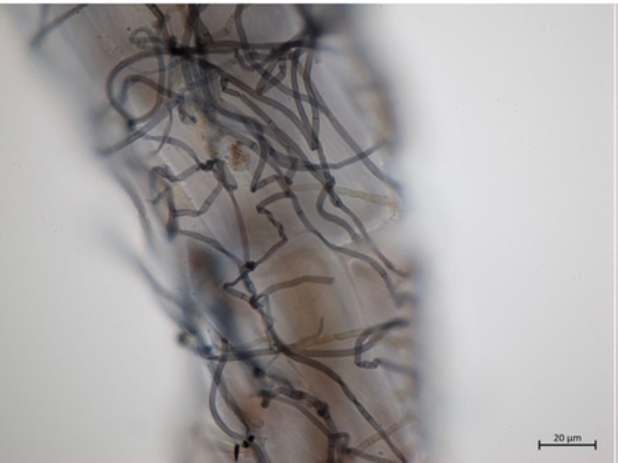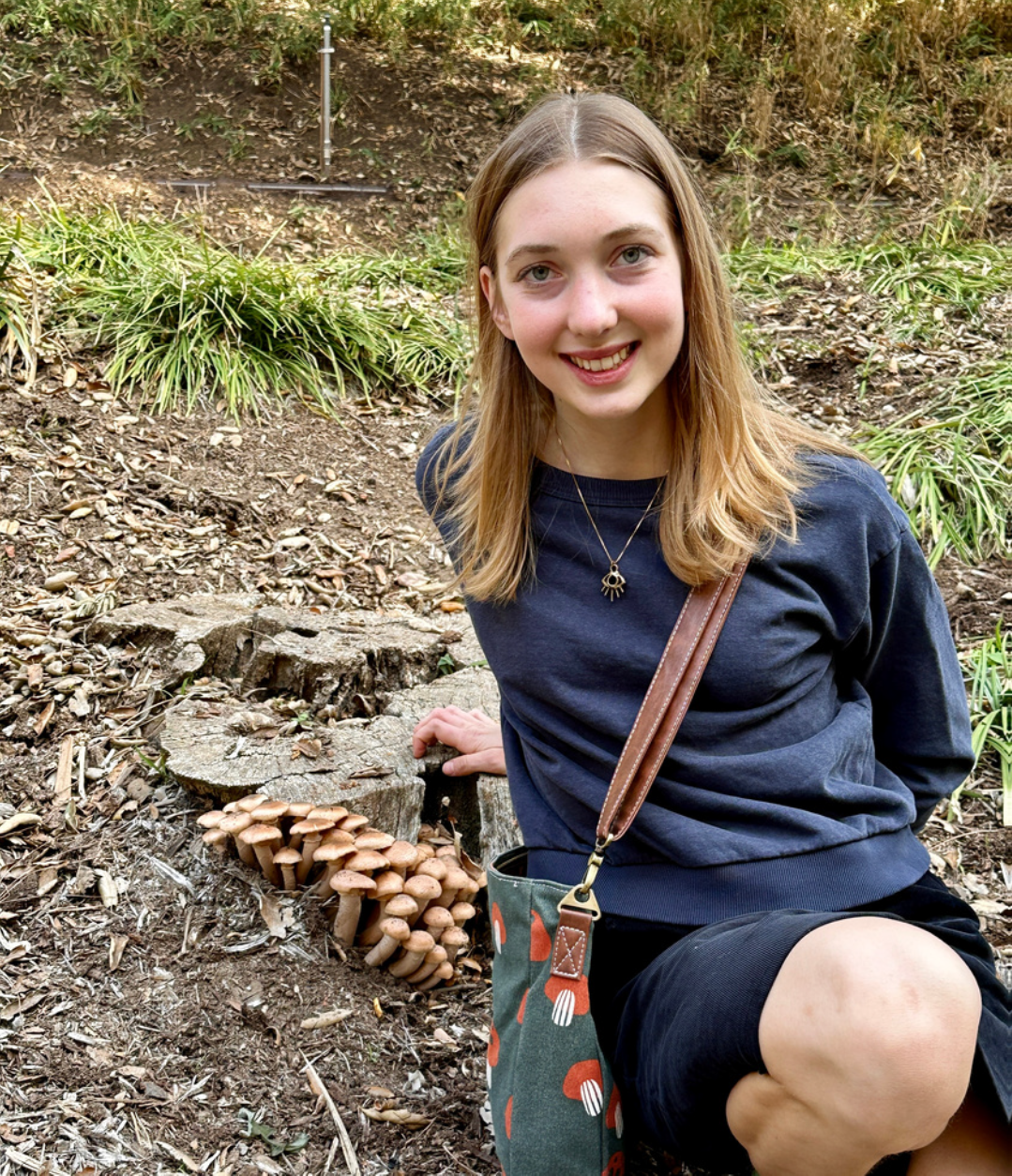






Where did you grow up?
I grew up in San Diego, CA
Where are you currentlydoing your research?
Smith College
Who is your advisor?
Jesse Bellemare, Ph.D
What do you like to do in your free time? What are your hobbies?
In addition to foraging for mushrooms, I love to garden, cook, read, swim, run, and play with my beloved black cat, Miso.
Who is your mycology role model?
Ester Gaya, the Senior Research Leader of Comparative Fungal Biology at the Royal Botanic Gardens, Kew.
What is something inspiring or useful that you learned from your experiences in mycology?
Just because something is small or obscure doesn’t mean that it isn’t significant. Though the charismatic Amanita muscaria may get all of the mainstream attention, the minuscule ERM that I work with are literally fundamental to the vitality of entire species of ericaceous plants.
Tell us about your project!
I am investigating the dynamics of the partnerships formed between native Massachusetts Mountain Laurel (Kalmia latifolia) and nonnative, North Carolina-sourced Carolina Rhododendron (Rhododendron carolinianum) with ericoid mycorrhizal fungi (ERM) in an effort to determine whether specialized biotic interactions, like mycorrhizal mutualisms, can help or hinder the migration ability of plant species responding to climate change. Specifically, I aim to evaluate the potential for the rare Rhododendron species to form mutualistic mycorrhizal partnerships with the strain of ERM associated with Mountain Laurel in northern regions, beyond the endemic species’ small native range in the south, as a novel conservation method.
To do this, I am using mesocosms to test the germination and seedling growth of R. carolinianum and K. latifolia in differing biotic and mycorrhizal environments on essentially identical abiotic soil conditions. While seed germination and seedling growth are used to infer the beneficial influence of ERM, I am further investigating the dynamics of fungal mutualisms by clearing and staining the fine roots of experimental seedlings, which I subsequently image using a Zeiss Axio Imager M2 Light Microscope. Not only does this allow me to confirm the phenomenon of ERM mutualism in the inoculated mesocosms, but it also clarifies the structure of the fungus through the visualization of its characteristic hyphal coils and their locality inside root cortical cells.

What are your career goals/plans for after you’re done with your current position?
I hope to further study the potential of fungal partnerships to aid in the conservation of endemic plants and to pursue a career related to this. However, I am also fascinated by the potential application of fungi to the decomposition of synthetic/manmade materials and, also, by the use of psilocybin to treat mental disorders, particularly eating disorders. Ultimately, it’s clear to me that my future is in fungi, but I have yet to determine which path to pursue.
What is your favorite fungus and why?
My favorite fungus would have to be ericoid mycorrhizal fungi (ERM), namely because I have studied them so intimately and feel that I’ve truly gotten to know them well. Though they aren’t at all showy (they can’t be seen without a microscope!), they are vital to the health of our ecosystems through the mutualisms that they form with plants, and I feel I can relate because I am an introvert who prefers to maintain a low profile, work efficiently behind the scenes, and who is known for being quiet and shy. Additionally, I am nonetheless smitten with the appearance ERM once they’re made visible with a microscope–frankly, I think that their hyphae coils are beautiful.
On a purely aesthetic basis, though, my favorite fungus is probably the ruby bonnet (Cruentomycena viscidocruenta), for its stunning flush of scarlet gills. And culinarily, my favorite fungus is certainly the Golden Chanterelle (Cantharellus cibarius)!
What is your favorite fact/thing about fungi?
My favorite thing about fungi would have to be its extreme versatility and ability to make a positive impact. I am endlessly moved by how fungi can serve as decomposers of countless forms of waste, food, aids in conservation, medicine, and sources of beauty, to name a few roles. They give me hope in a world that so often overwhelms and saddens me.
Any great stories from field work?
In an effort to explain the appearance of mycorrhizal fungi to others, my lab kept trying to find commonplace objects to relate it to. The closest we got was piles of spaghetti, so now that’s all I can think of when I look at ERM coils under the microscope. Also, we found a salamander in one of our soil samples and subsequently rescued him, naming him Ziploc in a nod to the vast number of Ziploc bags that we go through to collect soil samples and ericaceous root samples in the field.
Some other projects
I manage the Instagram account @smithcollegefungi, where I post photos of my (and other Smith students’) fungal encounters, with IDs. Not only do I do this as a form of keeping records for myself, but I really hope that it educates my peers about the vast world of fungi at their fingertips and gets them foraging! Additionally, I am drafting a paper analyzing the symbolism of fungi in Sylvia Plath’s poetry as a contribution to “The Bell Jars: Lyman Plant Conservatory and Sylvia Plath’s BotanicalImagination,” an exhibit on display this year at Smith College; I hope to submit this for publication when the project has culminated.



Leave a Reply